R.J. Stowell's Blog: rjsomeone, page 22
July 14, 2020
AM@Random – 11:11 – 20 Years On
As he completed the recording of Everything in Transit in June 2005, Andrew McMahon (already known for his work with Something Corporate and songs like "I Woke Up in a Car," "Cavanaugh Park," and "As You Sleep") was diagnosed with acute lymphoblastic leukemia. After a successful bone marrow transplant, he was cancer-free in August of that year. His band, Jack's Mannequin, would go on to record two more LPs and then retire the name. His latest band, Andrew McMahon in the Wilderness, has had three successful LPs. He was nominated for an Emmy in 2013.
Through his illness, Andrew took the initiative to establish the Dear Jack Foundation. From the website: "In an effort to initiate change and provide a voice for the generations of young adults who have been diagnosed with cancer, Andrew founded the Dear Jack Foundation in July of 2006." Alongside the Dear Jack Foundation, are organizations like 11:11am, who support charities like Dear Jack and the Pediatric Cancer Research Foundation.
11:11 comes from the Something Corporate epic "Konstantine": "I always catch the clock
It's 11:11." The phrase is one associated with hope. 11:11 is believed to be the time to make a wish. As a funding source, 11:11am sells orange wrist bracelets with funds supporting Dear Jack and others.
It's now 20 years since Something Corporate's 1st EP, Ready…Break, was released and "Konstantine" is still Andrew’s most requested song. A song he rarely plays, it is one of my favorites, as well as my oldest daughter’s.
Looking through some old collectibles the other day, I found my 11:11 bracelet. In this roiling world of Covid19 and social unrest, we forget that there are those who need us, many of them children who don't care about politics; all they want is to hurt less. I always want to bring to the milesfromnowhere/AM reader new music, and this time, hopefully, as well, awareness of a way to give.
Published on July 14, 2020 12:52
July 9, 2020
The Other Canyon - Back to '68
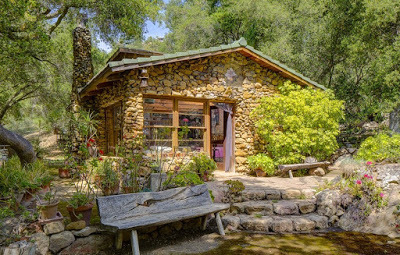 Laurel Canyon has a history that movies are made of, with Mama Cass the acting mayor of a quirky enclave of artists. AM has spent a lot of time chronicling CSN&Y and the Laurel Canyon Scene from the late 60s through the end of '71, but there was another canyon endowed with a rich musical history: Topanga. Like Laurel Canyon, Topanga was initially the home of many Hollywood actors, including Humphrey Bogart, Peter Lorre, Shirley Temple, Johnny Weissmuller (Olympian more famous as Tarzan) and Dennis Hopper, to name a few.
Laurel Canyon has a history that movies are made of, with Mama Cass the acting mayor of a quirky enclave of artists. AM has spent a lot of time chronicling CSN&Y and the Laurel Canyon Scene from the late 60s through the end of '71, but there was another canyon endowed with a rich musical history: Topanga. Like Laurel Canyon, Topanga was initially the home of many Hollywood actors, including Humphrey Bogart, Peter Lorre, Shirley Temple, Johnny Weissmuller (Olympian more famous as Tarzan) and Dennis Hopper, to name a few.The Topanga Corral, a nightclub nestled deep in the canyon, featured an eclectic mix of performers, including Canned Heat, Spirit, Little Feat, Taj Mahal, Emmy Lou Harris, and Neil Young. Jim Morrison of the Doors was inspired to write "Roadhouse Blues" while driving up the canyon to hang at The Corral. Even the infamous Charles Manson had a band, "Milky Way," that was fired from the club because they didn't draw a beer drinking crowd. The Topanga Corral burned down in the late 70's.
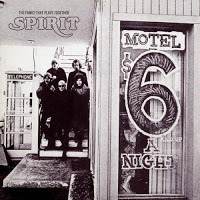 Among the Topanga elite was Spirit. The band featured Randy California on guitar, Mark Andes on bass, Jay Ferguson's vocals, and John Locke and Ed Cassidy on drums. California was a tremendous guitarist underrated by critics. Jimi Hendrix gave him the surname (real name Wolfe), and invited him to England to play backup guitar in his band, The Experience. California's family expressly forbid it. Thanks, family.
Among the Topanga elite was Spirit. The band featured Randy California on guitar, Mark Andes on bass, Jay Ferguson's vocals, and John Locke and Ed Cassidy on drums. California was a tremendous guitarist underrated by critics. Jimi Hendrix gave him the surname (real name Wolfe), and invited him to England to play backup guitar in his band, The Experience. California's family expressly forbid it. Thanks, family.The debut album Spirit was an icon of psychedelic music in the mid-sixties and reached No. 31 on the Billboard album chart in 1968. Led Zeppelin opened for Spirit on their 1968 tour and here we find the catalyst of contention that surrounds Spirit's "Taurus" and "Stairway to Heaven." While there are definitive similarities, both songs hinge on a common A minor chord progression with a descending bass line. Far from uncommon. What's unfortunate is the controversy diminishes both tracks when each has merit in the rock canon. In essence, "Taurus" is a brief instrumental that seems to lay the groundwork for only the first movement (of six) of "Stairway." Listen to and enjoy them both.
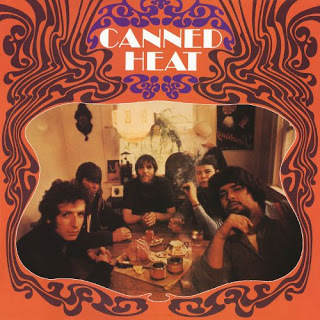 The band that truly reflects the other canyon attitude, in addition to indoctrinating the hippie culture to boogie and blues, was Canned Heat. Bob Hite, known as "The Bear" because he weighed well over 300 lbs, and Allen Wilson, known as "Blind Owl" (he was practically blind), formed in 1965. Since both Hite and Wilson were blues purest, they acquired the name Canned Heat from a song written in 1928 by Tommy Johnson. The song's about an alcoholic so down on his luck he'd drink sterno, also known as "Canned Heat." Canned Heat's boogie/blues stylings garnered acclaim for their performances at both Monterey and Woodstock.
The band that truly reflects the other canyon attitude, in addition to indoctrinating the hippie culture to boogie and blues, was Canned Heat. Bob Hite, known as "The Bear" because he weighed well over 300 lbs, and Allen Wilson, known as "Blind Owl" (he was practically blind), formed in 1965. Since both Hite and Wilson were blues purest, they acquired the name Canned Heat from a song written in 1928 by Tommy Johnson. The song's about an alcoholic so down on his luck he'd drink sterno, also known as "Canned Heat." Canned Heat's boogie/blues stylings garnered acclaim for their performances at both Monterey and Woodstock. Blind Owl Wilson suffered from clinical depression issues and many times attempted suicide, when sadly, in September 1970, at age 27, he succumbed to an overdose of barbiturates in Bob Hite's backyard. He was known to sleep outside under the stars. His death came weeks before Janis Joplin's and Jimi Hendrix' deaths, though he never received the same notoriety.
 Other Topanga musicians include Woody Guthrie, Lowell George, The Flying Burrito Brothers' Gram Parsons and Spanky McFarlane of Spanky and Our Gang. While The Mamas and the Papas get all the press, Spanky and Our Gang were as effervescent and timely as John Phillips et al. Their debut LP from 1967 remains one of my guilty pleasures, with hits like "Lazy Day" and "Sunday Will Never Be the Same" interspersed with hippie cabaret including a wonderful rendition of "Brother, Can You Spare a Dime" and a tribute to our friend the dictionary in a short piece called "The Five Meanings of Love." As an impressionable five-year-old, I was particularly enamored with hippie culture through the track called "Commercial," an advertisement for marijuana with the catch line, "Pot's too good to be just for the young." While humorous, it also captured the true spirit of a honky tonk. Not on the LP is one of my all-time favorite singles, "Like to Get to Know You," released in 1968. To this day I just love the song's coda; a slow, dreamy version of the core melody – Like to get to know you on acid. It exemplified canyon life.
Other Topanga musicians include Woody Guthrie, Lowell George, The Flying Burrito Brothers' Gram Parsons and Spanky McFarlane of Spanky and Our Gang. While The Mamas and the Papas get all the press, Spanky and Our Gang were as effervescent and timely as John Phillips et al. Their debut LP from 1967 remains one of my guilty pleasures, with hits like "Lazy Day" and "Sunday Will Never Be the Same" interspersed with hippie cabaret including a wonderful rendition of "Brother, Can You Spare a Dime" and a tribute to our friend the dictionary in a short piece called "The Five Meanings of Love." As an impressionable five-year-old, I was particularly enamored with hippie culture through the track called "Commercial," an advertisement for marijuana with the catch line, "Pot's too good to be just for the young." While humorous, it also captured the true spirit of a honky tonk. Not on the LP is one of my all-time favorite singles, "Like to Get to Know You," released in 1968. To this day I just love the song's coda; a slow, dreamy version of the core melody – Like to get to know you on acid. It exemplified canyon life.
Published on July 09, 2020 12:29
July 8, 2020
Boogie With Canned Heat -
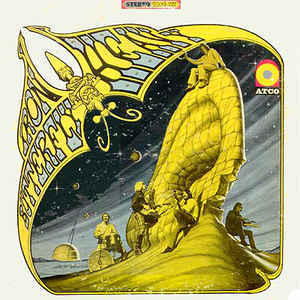 I found two album covers particularly frightening when I was little: The Iron Butterfly LP with the big ear on the moon and Canned Heat's Boogie With Canned Heat. I liked the sci-fi take on Heavy, but it gave me nightmares. Boogie With Canned Heat, conversely, kept me awake, like those monster models from Aurora that my brother built.
I found two album covers particularly frightening when I was little: The Iron Butterfly LP with the big ear on the moon and Canned Heat's Boogie With Canned Heat. I liked the sci-fi take on Heavy, but it gave me nightmares. Boogie With Canned Heat, conversely, kept me awake, like those monster models from Aurora that my brother built. In 1967 Canned Heat signed to Liberty Records after appearing at Monterey. In July, they released a self-titled LP that made it to No. 76 on the album chart, quickly followed by Boogie with Canned Heat in early 1968, which spent over a year on the Billboard chart, peaking at No. 16. Where the debut album was largely covers, including the obligatory (for a blues band) "Dust My Broom," Boogie was largely original material and remains a firm favorite for anyone who loves the blues. A significant reason for its success is the iconic "On the Road Again" which made it to No.16 on the Hot 100 in the summer of '68.
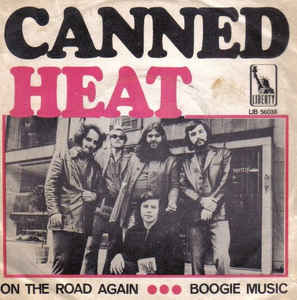 Chicago bluesman Floyd Jones recorded a track entitled "On the Road Again" in 1953, itself a remake of another of his songs from two years prior called "Dark Road." Both these songs are based on Tommy Johnson's 1928 "Big Road Blues." Canned Heat's version was recorded as a 7-minute demo in April 1967 at RCA Studios in Chicago with original drummer, Frank Cook. During the recording of Boogie with Canned Heat, the band recorded it again, this time with new drummer Adolfo "Fito" de la Parra at Liberty Records studio in Los Angeles in September 1967. Blind Owl Wilson used verses from Floyd Jones' "On the Road Again" and "Dark Road," as well as adding some of his own lyrics. "On the Road Again" went to No.8 in the UK later in '67. The track uses a one-chord boogie riff inspired by John Lee Hooker's 1949 hit "Boogie Chillen'" that is made distinctive by Wilson's best Skip James-inspired falsetto and his unique harp playing.
Chicago bluesman Floyd Jones recorded a track entitled "On the Road Again" in 1953, itself a remake of another of his songs from two years prior called "Dark Road." Both these songs are based on Tommy Johnson's 1928 "Big Road Blues." Canned Heat's version was recorded as a 7-minute demo in April 1967 at RCA Studios in Chicago with original drummer, Frank Cook. During the recording of Boogie with Canned Heat, the band recorded it again, this time with new drummer Adolfo "Fito" de la Parra at Liberty Records studio in Los Angeles in September 1967. Blind Owl Wilson used verses from Floyd Jones' "On the Road Again" and "Dark Road," as well as adding some of his own lyrics. "On the Road Again" went to No.8 in the UK later in '67. The track uses a one-chord boogie riff inspired by John Lee Hooker's 1949 hit "Boogie Chillen'" that is made distinctive by Wilson's best Skip James-inspired falsetto and his unique harp playing.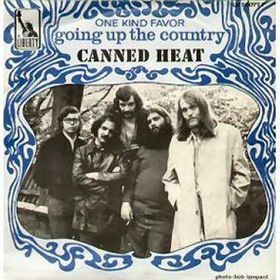 Other stand out Canned Heat cuts include "World in a Jug," the b-side of "On the Road Again," "Amphetamine Annie," and the 11-plus minute"Fried Hockey Boogie" that the band reworked as "Woodstock Boogie" when they played the festival in August 1969.
Other stand out Canned Heat cuts include "World in a Jug," the b-side of "On the Road Again," "Amphetamine Annie," and the 11-plus minute"Fried Hockey Boogie" that the band reworked as "Woodstock Boogie" when they played the festival in August 1969.Besides the five core members, the album features a cameo from pianist Sunnyland Slim on "Turpentine Moan." Dr. John also plays piano on the album, as well as providing the horn arrangements (his own debut album, Gris Gris, was released the same day in 1968 (21 January).
Canned Heat’s biggest hit, "Goin' Up the Country" would follow two years later on the band's third LP, Living the Blues. The song, often labeled as a "Hippie Anthem," was based on "Bull Doze Blues" by 20s bluesman Henry Thomas. The unique flutelike sound is the quills, essentially blues panpipes, similar to what is found on Thomas’ version, but set to a rock 'n' roll beat. The song reached No. 11 on the Billboard charts, and of course has become a musical symbol of getting away from it all. Canned Heat is highly underrated LP that should be required listening for anyone interested in the blues.
 Scary
Scary
Published on July 08, 2020 10:21
July 6, 2020
Keats and Yeats are on Your Side - Père-Lachaise
 Wikipedia is constantly asking for handouts. At AM we don't ask for charity (give that to animals or St. Jude); instead our funding is tied to the sale of Calif. So here's our Wiki-like appeal: Please help to fund AM by purchasing the novel or Kindle versions of Calif. by clicking on the links in the sidebar. In return, we promise to continue to write an article per day, sometimes more, and to provide your rock lit fix. To quote Morrissey, "Please, please, please..."
Wikipedia is constantly asking for handouts. At AM we don't ask for charity (give that to animals or St. Jude); instead our funding is tied to the sale of Calif. So here's our Wiki-like appeal: Please help to fund AM by purchasing the novel or Kindle versions of Calif. by clicking on the links in the sidebar. In return, we promise to continue to write an article per day, sometimes more, and to provide your rock lit fix. To quote Morrissey, "Please, please, please..."Gaia and I enter from the corner by the Père-Lachaise metro station. A cemetery official was there with maps for sale and postcards of Jim's grave. Jim is No. 20. The man is pleasant and speaks English well. He says that he sells few postcards other than Jim's and mentions that on the 100th anniversary of Chopin's death (No. 7), there were no visitors.
I am awestruck by the crypts and tombs like small apartments. We weave our way to our destination ("Jim" painted on the cobbles, and an arrow). As we get closer, my heart pounds with anticipation; will I feel different after completing this journey? Will his karma leap out engulfing me? Someone yells, "It's over here," and finally I lay eyes on a simple grave tucked in-between more stately others.
 I count 10 people here. Gaia's offering is a stick of Jasmine incense; a young man writes "POT" in the dirt on the grave. He weeps for several minutes as his parents stand behind, the mother's head buried within his father's shoulder. Minutes later, a young girl from Belgium steps up wearing a DOORS T-shirt. My shirt is brown with yellow graphics that mimic the billboard my father painted for L.A. Woman: Jim on a cross, the crucifix a phone pole. Our shirts bridge the communication gap and we smile, politely. On the grave are two joints, pages of poetry, 3 bouquets of flowers and a can of beer, which is promptly removed by the guard who stands constant watch within a few meters of the site.
I count 10 people here. Gaia's offering is a stick of Jasmine incense; a young man writes "POT" in the dirt on the grave. He weeps for several minutes as his parents stand behind, the mother's head buried within his father's shoulder. Minutes later, a young girl from Belgium steps up wearing a DOORS T-shirt. My shirt is brown with yellow graphics that mimic the billboard my father painted for L.A. Woman: Jim on a cross, the crucifix a phone pole. Our shirts bridge the communication gap and we smile, politely. On the grave are two joints, pages of poetry, 3 bouquets of flowers and a can of beer, which is promptly removed by the guard who stands constant watch within a few meters of the site. It's odd, the aura. Père-Lachaise is silent but for the birds twittering in the trees and a crow that sits atop the head of Honoré de Balzac. Still there's music in the air. If thoughts were colors you'd see lyrics wafting out the heads of Jim's guests. The aura from my head is yellow, "Break on through to the other side;" an endless stream of "Break on through to the other side." The Belgian girl's is purple. It says, "This is the end, beautiful friend the end." Hers is sadder than mine, the lyrics dripping down like rain.
I look up and Gaia is gone. She is at the grave of Théodore Géricault. In bronze he lies upon his side with a painter's palette, wearing a beret. She's standing there. I take her hand. "Hi." "Hi." There's silence. The lyrics from out of our heads mix and swirl, but Gaia is singing Morrissey: "Meet me at the cemet'ry gate. Keats and Yeats are on your side." We wander the pathways. We reach the metro. She looks at me and says, "Keats and Yeats are on your side." "While Wilde is on mine," I reply, and the metro pulls into the station. - Edit from Jay and the Americans

Published on July 06, 2020 07:43
July 4, 2020
Jim Morrison - Our Twisted Memories - 50 Years Ago
 On a miserable morning in 1947, Jim's family was driving through the desert of New Mexico outside Santa Fe. Suddenly his father veered off the road to avoid the head-on collision ahead between a car and a pickup driven by Indians. Their bodies were "scattered on dawn's highway bleeding." The anguished voice of a woman was heard wailing hysterically. When the young Jim tried to get out of the car with his father and grandfather to see what was happening, his mother stopped him, though he pressed his face to the window.
On a miserable morning in 1947, Jim's family was driving through the desert of New Mexico outside Santa Fe. Suddenly his father veered off the road to avoid the head-on collision ahead between a car and a pickup driven by Indians. Their bodies were "scattered on dawn's highway bleeding." The anguished voice of a woman was heard wailing hysterically. When the young Jim tried to get out of the car with his father and grandfather to see what was happening, his mother stopped him, though he pressed his face to the window.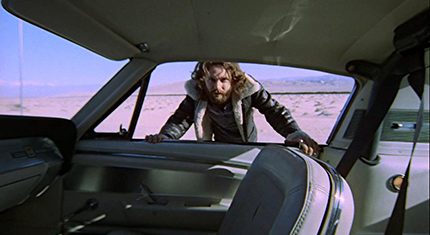 Years later, in a dark recording studio in West Hollywood, Morrison said, "Ya know, the first time I discovered death - Me and my mother and father, and I'm not sure if my sister was there or whether she was alive or not, and my grandmother and grandfather, were driving through the desert at dawn...and a truckload of Indian workers had either hit another car or I don't know what happened, but there were Indians scattered all over the highway; bleeding to death.
Years later, in a dark recording studio in West Hollywood, Morrison said, "Ya know, the first time I discovered death - Me and my mother and father, and I'm not sure if my sister was there or whether she was alive or not, and my grandmother and grandfather, were driving through the desert at dawn...and a truckload of Indian workers had either hit another car or I don't know what happened, but there were Indians scattered all over the highway; bleeding to death. "And that was my first reaction to death, and I don't know whether I'm crazy or what, but I had the feeling when that happened, like I didn't want to look back. I'm just this little - like a child is a flower, man, whose head is just floating in the breeze, man. But the reaction I get now thinking back, looking back, is that possibly, the soul of one of those Indians, maybe several of them, just ran over and jumped into my brain." (Jim's account of the story is quite different from his family's; nonetheless the incident left quite an impression on the five year old, causing what today may be diagnosed as childhood depression that included both anxiety and bed-wetting.)
Published on July 04, 2020 05:46
June 30, 2020
Rock and Other Four Letter Words - 50 Years Ago

 "Our House"
"Our House"Steffi Nelson in her review for the LA Weekly ("Back to the Garden") stated, "There are some who say the 60s didn't end until mid-way through the 70s, others who believe Helter Skelter in August [referring to the Manson Family murders] followed by Altamont in December slammed the book on the decade the minute the clock struck 1970. The hippie look and lexicon certainly lasted well into the 70s, but purity in any movement is fragile and fleeting. Born of isolation and insulation, the Laurel Canyon scene couldn't survive the scrutiny or the influx of drugs and money. By the end of 1969 the royalties from CSN's massively successful debut album had already bought the musicians new homes in other, more upscale neighborhoods."
 The Byrds
The ByrdsThis reporter's opinion is clear: the 70s were brand spankin' new. Though many of those Laurel Canyon artists of the 60s would populate the charts in the 70s, they did so with a blind eye to things that passed. Through Asylum Records, the California sect ran from the folk scene to jazz; if nothing else they turned out something new, something unnamed: acid jazz maybe (too strong), fusion rock (too lame), post folk (not catchy); nonetheless, out of Ladies of the Canyon came Blue and Late for the Sky and Hotel California.
In 1865 Edouard Manet shocked Parisian audiences at the Salon with his painting Olympia, an unabashed depiction of a prostitute lounging in bed, naked save a pair of slippers and a necklace. Manet's endeavor to capture the flavor of contemporary society extended to portraits of barmaids, street musicians, ragpickers, and other standard Parisian "types" from out of the foul rag and bone shop of literature, but there was no place for that at the Academy.
The 70s rock music scene was that explosive, that revolutionary.
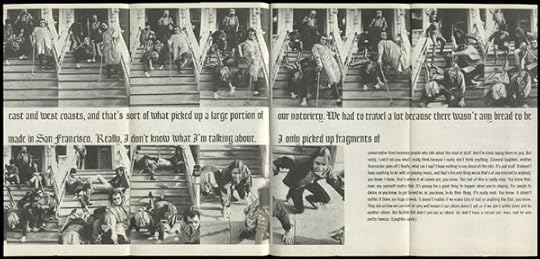 An excerpt from Rock and Other Four Letter Words
An excerpt from Rock and Other Four Letter Words AnotherIn the 1960s, grand as it may have been, as many AM10s as there were, most of what was celebrated, from Jefferson Airplane to Buffalo Springfield, was evolutionary, an extension of what was, but by 1972, musicians on both sides of the Atlantic were smashing the molds in a way that arguably hadn’t been seen since Robert Johnson. Suddenly we weren't so much channeling Woody Guthrie through Arlo, we (I write this as if somehow I played a role) were pushing all the boundaries. Joni Mitchell, indeed, dismissed the elements of song (verse, chorus, bridge) and created a musical format equivalent to the tone poem; Roxy Music was doubleplusgood, out there, indescribable - I'm reaching for adjectives that fit; there are none. It was too new, too whacked, too out there. It was a dividing line like Alice going through the looking glass. New York would come later, '73 maybe - punk new wave, hip hop, minimalist classical, avant-jazz, all would come out of the east, not yet.
AnotherIn the 1960s, grand as it may have been, as many AM10s as there were, most of what was celebrated, from Jefferson Airplane to Buffalo Springfield, was evolutionary, an extension of what was, but by 1972, musicians on both sides of the Atlantic were smashing the molds in a way that arguably hadn’t been seen since Robert Johnson. Suddenly we weren't so much channeling Woody Guthrie through Arlo, we (I write this as if somehow I played a role) were pushing all the boundaries. Joni Mitchell, indeed, dismissed the elements of song (verse, chorus, bridge) and created a musical format equivalent to the tone poem; Roxy Music was doubleplusgood, out there, indescribable - I'm reaching for adjectives that fit; there are none. It was too new, too whacked, too out there. It was a dividing line like Alice going through the looking glass. New York would come later, '73 maybe - punk new wave, hip hop, minimalist classical, avant-jazz, all would come out of the east, not yet.Other historians might argue that the revolt came sooner. In an episode of Mad Men set in 1966, Don Draper says, "When did music become so important?" Later in the episode he turns off the Beatles' "Tomorrow Never Knows" and walks from the room. But that wasn't the revolution, that was the seed, and the seeds were sown across the land, and it was good (sorry, getting carried away).
 The Hollywood Sign, 1973Picture it: the year is 1970. The place: Laurel Canyon. Tucked away in the hills of Los Angeles, bohemian bungalows fill the canyon inhabited by the coolest and most talented in the music industry. Marijuana smoke fills the air and Frank Zappa could take a stroll down the road and hear the tunes of Crosby, Stills, Nash and Young's guitars echoing through the hills. Graham Nash moved out to LA to stay with his lover, Joni Mitchell. All hanging out together, co-writing songs, taking drugs, and messing around.. David Crosby, Stephen Stills, Michelle Philips, Linda Ronstadt, Mama Cass, The Rolling Stones, Frank Zappa, and Jackson Browne were just a few of the groovy rock 'n' roll bandits who were making history in the free love world of Laurel Canyon. Other stars from all of the world were known to have frequented the canyon to visit their famous friends, too.
The Hollywood Sign, 1973Picture it: the year is 1970. The place: Laurel Canyon. Tucked away in the hills of Los Angeles, bohemian bungalows fill the canyon inhabited by the coolest and most talented in the music industry. Marijuana smoke fills the air and Frank Zappa could take a stroll down the road and hear the tunes of Crosby, Stills, Nash and Young's guitars echoing through the hills. Graham Nash moved out to LA to stay with his lover, Joni Mitchell. All hanging out together, co-writing songs, taking drugs, and messing around.. David Crosby, Stephen Stills, Michelle Philips, Linda Ronstadt, Mama Cass, The Rolling Stones, Frank Zappa, and Jackson Browne were just a few of the groovy rock 'n' roll bandits who were making history in the free love world of Laurel Canyon. Other stars from all of the world were known to have frequented the canyon to visit their famous friends, too. 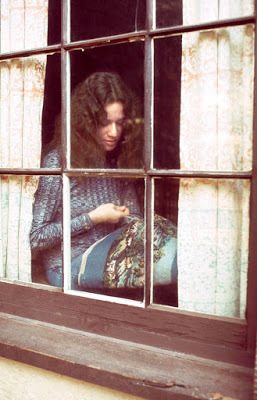 Growing up I had a book, Rock and Other Four Letter Words. There's a quote from John Sebastian: "We're not really derivative of New York. Don't forget, I've just been listening to the radio since I was fourteen, like everybody else. My folks went to Italy when I was eight. When I got back, my symbols weren't the same as other kids. I wasn't very interested in cars and beer." Maybe that's a key to the revolution. Maybe it wasn't the music changing us, maybe it was us suddenly immersed in the world. Sebastian went to Italy, but each and every one of us, whether 14 or 20 or 6, lived vicariously through The Big News or movies and song. The catalyst was everywhere. Music changed us. We changed music. This we can talk on and around forever, though when our throats are dry and the angel of hush flutters across the room, someone puts on Joni or The Beatles and we move forward.
Growing up I had a book, Rock and Other Four Letter Words. There's a quote from John Sebastian: "We're not really derivative of New York. Don't forget, I've just been listening to the radio since I was fourteen, like everybody else. My folks went to Italy when I was eight. When I got back, my symbols weren't the same as other kids. I wasn't very interested in cars and beer." Maybe that's a key to the revolution. Maybe it wasn't the music changing us, maybe it was us suddenly immersed in the world. Sebastian went to Italy, but each and every one of us, whether 14 or 20 or 6, lived vicariously through The Big News or movies and song. The catalyst was everywhere. Music changed us. We changed music. This we can talk on and around forever, though when our throats are dry and the angel of hush flutters across the room, someone puts on Joni or The Beatles and we move forward.
Published on June 30, 2020 07:32
June 29, 2020
Lit Rock 101 - Layla and Other Tales
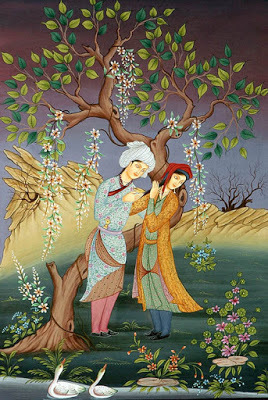 Musicians like to write songs about literature, from novels to short stories, from Shake or Shelley. Whether it's the pedophilic teacher Humbert Humbert in The Police's "Don't Stand So Close to Me" or one the many Tolkien references that saturate Led Zeppelin songs, there is an endless list of literary references in Rock.
Musicians like to write songs about literature, from novels to short stories, from Shake or Shelley. Whether it's the pedophilic teacher Humbert Humbert in The Police's "Don't Stand So Close to Me" or one the many Tolkien references that saturate Led Zeppelin songs, there is an endless list of literary references in Rock. Love isn't easy for anyone, not even famous rock stars; that's why we have endless songs of broken hearts. Guitar God Eric Clapton got the memo when he met—and immediately fell for—Pattie Boyd. There was a problem: she was already married to Clapton's good friend, George Harrison. When Clapton read The Story of Layla and Majnun, he felt a connection to the ill-fated Majnun. In Ganjavi Nizami's 1192 poem, a young man named Majnun falls in love with the beautiful Layla. "Falls in love" is a nice way of putting it—he becomes obsessed. Layla's father, refusing to marry her to a madman, marries her off to someone else. Denied his love, Majnun goes to live in the wilderness, where he is sometimes seen writing poetry and singing songs to Layla. In Clapton’s "Layla," he begs her to, "make the best of the situation, before I finally go insane," like the poor Majnun. Of course, unlike Majnun, Clapton did eventually marry, and later divorce, his Layla.
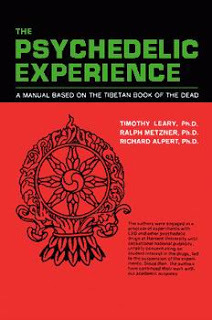 It is crazy to think that if Frederich Nietzsche hadn't been so popular, we may never have experienced the Beatles' psychedelic phase. Searching the bookstore for a copy of The Portable Nietzsche, John Lennon instead picked up a copy of Timothy Leary's The Psychedelic Experience. Inspired by The Tibetan Book of the Dead, Leary's book is an instruction manual meant to aid your psychedelic drug-taking experience. Lennon brought the book home, took some LSD, and had a mind-altering experience. "Tomorrow Never Knows" provides the listener with some of the same instructions: "turn off your mind, relax, and float downstream."
It is crazy to think that if Frederich Nietzsche hadn't been so popular, we may never have experienced the Beatles' psychedelic phase. Searching the bookstore for a copy of The Portable Nietzsche, John Lennon instead picked up a copy of Timothy Leary's The Psychedelic Experience. Inspired by The Tibetan Book of the Dead, Leary's book is an instruction manual meant to aid your psychedelic drug-taking experience. Lennon brought the book home, took some LSD, and had a mind-altering experience. "Tomorrow Never Knows" provides the listener with some of the same instructions: "turn off your mind, relax, and float downstream."While the clever title might make it obvious, "ReJoyce”" is Jefferson Airplane's paraphrasing of James Joyce's Ulysses. Loosely inspired by Homer's Odyssey, the famous novel follows a day in the life of Leopold Bloom and Stephen Dedalus, and how their lives interact. Jefferson Airplane takes this lengthy work and boils it down to its basics. They invoke the dark madness that permeates the novel and even mention, "Molly’s gone to blazes, Boylan's crotch amazes," referring to Molly Bloom's affair (cf. Kate Bush: "and first I put my arms around him yes and drew him down to me so he could feel my breasts all perfume yes and his heart was going like mad and yes I said yes I will Yes").
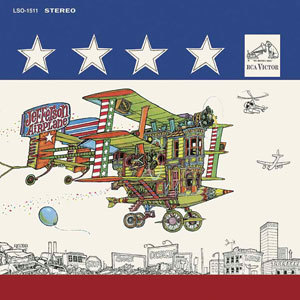 "Young teacher, the subject of schoolgirl fantasies:" Right from the first line, you know what’s going down. In this tale of an inappropriate relationship between a teacher and his student, the man struggles against his urges but eventually gives in. Whenever a story like this pops up, you can’t help but immediately go to the quintessential story of pedophilic love: Vladimir Nobokov's Lolita. Lest there be any question about their inspiration, The Police include the lyric "just like the old man in that book by Nabokov."
"Young teacher, the subject of schoolgirl fantasies:" Right from the first line, you know what’s going down. In this tale of an inappropriate relationship between a teacher and his student, the man struggles against his urges but eventually gives in. Whenever a story like this pops up, you can’t help but immediately go to the quintessential story of pedophilic love: Vladimir Nobokov's Lolita. Lest there be any question about their inspiration, The Police include the lyric "just like the old man in that book by Nabokov."Led Zeppelin has a well-documented love for J.R.R. Tolkien and Middle Earth, referencing it in songs like "Ramble On" and "Misty Mountain Hop." "The Battle of Evermore" tells the story of one of the final battles for Middle Earth: It talks of Sauron, "the Dark Lord rides in force tonight," and "the Ringwraiths ride in black tonight." And of course, Frodo and the One Ring get special attention: "The magic runes are writ in gold to bring the balance back. Bring it back." Though it’s unclear who the Prince of Peace is, the Tolkien connection is clear.
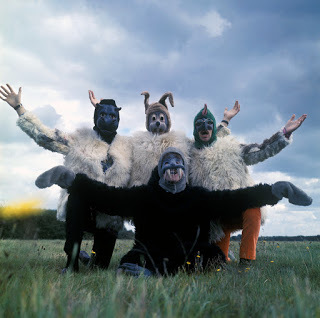 In the 60s, it was not uncommon to look to Eastern philosophies for guidance and inspiration; Pink Floyd was no different. In "Chapter 24," Pink Floyd take the I Ching, an ancient Chinese text on divination, and set it to music. Specifically, they pull from chapter 24 of the book, which describes the process of divining using hexagrams, a process that goes through six stages. The song has a meditative sound that carries the teachings of the I Ching through the listener and deepens the experience.
In the 60s, it was not uncommon to look to Eastern philosophies for guidance and inspiration; Pink Floyd was no different. In "Chapter 24," Pink Floyd take the I Ching, an ancient Chinese text on divination, and set it to music. Specifically, they pull from chapter 24 of the book, which describes the process of divining using hexagrams, a process that goes through six stages. The song has a meditative sound that carries the teachings of the I Ching through the listener and deepens the experience.Lest we forget, Bowie's take on 1984, Wakeman’s on Journey to the Centre of the Earth, Springsteen's The Ghost of Tom Joad, The Cure's "Killing and Arab" (Albert Camus' The Stranger), Morrison’s references to Huxley, William Blake and Berthold Brecht. The question remains, how often is it the other way around? How many examples are there of literature based on music instead? Hmm, well there is this novel by, oh, me, Jay and the Americans, but that’s just a shameless plug. Instead, how about Haruki Murikama’s Norwegian Wood, Absolute Beginners by Colin MacInnes or Dylan as the inspiration for a key character in Scott Spencer’s The Rich Man’s Table? Before Dylan, rock stars and literary writers were considered contradictions in terms, the pure division of mind and body. Even Dylan was mocked by Updike for looking "three months on the far side of a haircut" at a concert in the early 1960s. By the late '60s, English teachers were reciting the lyrics of Dylan, the Beatles and Paul Simon with the kind of reverence usually shown for John Donne. Meanwhile, rock stars became more self-conscious (and pretentious) and literary, from the "rock theater" of the Doors to the "rock opera" of the Who's Tommy. "For people of that time, some of the rock lyrics were more important to us and occupied us more than reading the great poets, even those of us who went on to study those poets," said T. Coraghessan Boyle, whose books include Water Music and World's End.
Published on June 29, 2020 23:11
June 26, 2020
Clapton is God
 Eric Clapton is one of the great rock guitarists. One of those artists who is so totally dedicated to his craft that in a career that now spends 55 years, he’s never lost his dedication to learning and growing.
Eric Clapton is one of the great rock guitarists. One of those artists who is so totally dedicated to his craft that in a career that now spends 55 years, he’s never lost his dedication to learning and growing.Clapton has the nickname Slowhand, and many are under the misconception that, while Clapton is undoubtedly one of the greats in the history of rock music, he plays slowly and methodically. That is not the basis for the nickname. Instead, Clapton when with the Yardbirds, who he joined in 1963 alongside Jimmy Page and Jeff Beck, would make the audience wait should a guitar string break during a show. The audience would start a slow handclap making Eric's restringing of his guitar a part of the show, hence "Slowhand."
Then there's the "Clapton is God" thing, which inspired the famous photograph of a dog doing his business on the wall where the epithet was painted. Clapton hated that. He said he never thought himself the greatest guitar player in the world. He only wanted to be the greatest guitar player in the world.
From the Yardbirds, Clapton moved on to John Mayall and the Bluesbreakers and then of course to Cream with Ginger Baker and Jack Bruce, whose 1967 album Disraeli Gears is one of my top 10 rock albums.
After Cream, another supergroup was formed with Clapton, Ginger Baker, Steve Winwood of Traffic and Ric Grech from Family. That band was called Blind Faith who debuted the act before 100,000 people in London’s Hyde Park in June 1969 playing the megahit "Can't Find My Way Home."
But Clapton was the consummate artist and didn’t like being in the spotlight, and so, in the summer of 1969, he toured with Delaney and Bonnie and Friends. Delaney and Bonnie were kind of like Ringo Starr today, who’s All-star Band is ever-changing; everyone wanting to play with Ringo. Clapton was content to play his guitar quietly off to the side.
But that wasn’t all. He was also in the Plastic Ono Band and, of course, played guitar on George Harrison's "While My Guitar Gently Weeps." Clapton with the Delaney and Bonnie band were the session musicians for Harrison's All Things Must Pass. This was a busy guy.
51 years ago, the anonymity afforded him with Delaney and Bonnie led to his new project with Bonnie Bramlett as his Muse, Derek and the Dominos, and the LP with Clapton's most famous song “Layla,” one of the greatest singles ever released.
But things change quickly in the rock world. 50 years ago, less than a year after escaping into Delaney and Bonnie, Clapton was going through a miserable time emotionally and physically, addicted to heroin, cocaine and Jack. Not to mention being head over heals in love with his best friend's wife.
It was in 1970 as well that Clapton teamed up with the same band that back Harrison's All Things Must Pass, Bobby Whitlock (keyboards), Carl Radle (bass), and Jim Gordon (drums) to form a band that until the night of their first gig in June, didn't even have a name, or two occasional member, Duane Allman (who would play guitar on "Layla") and Dave Mason.
Both "Layla" and "Bell Bottom Blues" were direct tributes/love sonnets to Patty Boyd.
Published on June 26, 2020 13:20
Patti Boyd, George Harrison and Eric Clapton
 So, to keep it straight, it was Morrison and Pam, when it wasn't Nico; and Donovan and Sue Lyon; and Edie with Dylan and Bob Neuwirth; and Pattie Boyd with Harrison and Clapton and maybe Ron Wood.
So, to keep it straight, it was Morrison and Pam, when it wasn't Nico; and Donovan and Sue Lyon; and Edie with Dylan and Bob Neuwirth; and Pattie Boyd with Harrison and Clapton and maybe Ron Wood. Working as a model and actress while still in her teens, Patti Boyd was cast as a schoolgirl in A Hard Day's Night. It was on the set that she met George Harrison and began her journey as a rock muse. Known for her typically English looks, Pattie Boyd would herald the Carnaby Street look alongside Jean Seberg and Twiggy.
Harrison and Boyd married two years later, but George wasn't the only rock star vying for Boyd's attention, and putting pen to paper to craft songs about her. Eric Clapton, one of Harrison's best friends, also fell madly in love with Boyd, and wrote much of Derek and the Dominos' 1970 album, Layla and Other Assorted Love Songs, about Boyd and his "forbidden love." Patti and Harrison eventually divorced in 1977, but not before she had a brief fling with future Rolling Stones guitarist Ronnie Wood, and in 1979, Clapton got his Layla when he and Boyd married, though it wouldn't last.
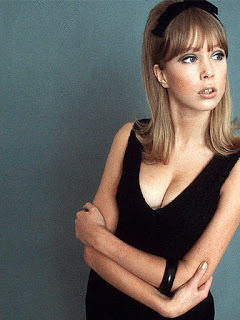 The string of hits that Boyd inspired are some of the most iconic songs in rock history. The first was Harrison’s "I Need You" from Help! Lyrically, “I Need You” functions as a straightforward love song. The narrator has fallen deeply in love, and begs his lover to return to him: “You don't realize how much I need you; love you all the time and never leave you," Harrison pleads. Lennon and McCartney’s backing harmonies emphasize the desperation expressed in these lines, creating a mood appropriate for downbeat sentiments such as "Please come on back to me; I’m lonely as can be."
The string of hits that Boyd inspired are some of the most iconic songs in rock history. The first was Harrison’s "I Need You" from Help! Lyrically, “I Need You” functions as a straightforward love song. The narrator has fallen deeply in love, and begs his lover to return to him: “You don't realize how much I need you; love you all the time and never leave you," Harrison pleads. Lennon and McCartney’s backing harmonies emphasize the desperation expressed in these lines, creating a mood appropriate for downbeat sentiments such as "Please come on back to me; I’m lonely as can be."Clapton used Derek and the Dominos' lone studio album, Layla and Other Assorted Love Songs, as a more than 77-minute declaration of love to Pattie Boyd-Harrison. The name "Layla" came from the fifth-century Arabian poem-turned-book The Story of Layla and Majnun, adapted by Persian poet Nizami Ganjavi. A mutual friend gave copies to both Clapton and Boyd. It was about forbidden love. Clapton secretly met with Boyd one afternoon in a South Kensington flat and played the song for her. Boyd wrote that it was "the most powerful, moving song I had ever heard" and noted that Clapton had identified with Majnun and was determined to know how she felt. Boyd went home to Harrison, at least on that day.
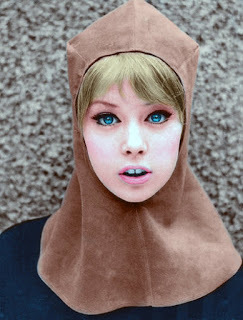 "Mystifies Me" was on Ron Wood's solo record I've Got My Own Album to Do, while he was still a member of Faces, and released a year before he joined the Rolling Stones (Mick Jagger, along with George Harrison, helped with some of the writing and performing). Wood had "sort of a warped rock star wife swap" in which he had an affair with Boyd and Harrison had an affair with Wood's first wife, Krissie Findley. Wood wrote in his autobiography that he had actually "pinched" Findley from Eric Clapton to begin with, further complicating things, and knew full well that Clapton was in love with Boyd. Soon after, Patti married Clapton.
"Mystifies Me" was on Ron Wood's solo record I've Got My Own Album to Do, while he was still a member of Faces, and released a year before he joined the Rolling Stones (Mick Jagger, along with George Harrison, helped with some of the writing and performing). Wood had "sort of a warped rock star wife swap" in which he had an affair with Boyd and Harrison had an affair with Wood's first wife, Krissie Findley. Wood wrote in his autobiography that he had actually "pinched" Findley from Eric Clapton to begin with, further complicating things, and knew full well that Clapton was in love with Boyd. Soon after, Patti married Clapton. Boyd recalled one incident in which she spent hours deciding which dress to wear for a night out, while Clapton waited in the other room, playing his guitar all the while. Inspired by the country singer Don Williams, who wrote "beautifully simple" lyrics about quotidian events, Clapton came up with the chorus to "Wonderful Tonight." When Boyd finally came downstairs and asked him if she looked all right, he played her what he had written. "It was such a simple song but so beautiful and for years it tore at me. To have inspired Eric, and George before him, to write such music was so flattering. Yet I came to believe that although something about me might have made them put pen to paper, it was really all about them."
Published on June 26, 2020 13:07
June 25, 2020
Now It's Easy to Get Your Copy of Calif.
Click anywhere on the graphic for our FB Page.
Then click SHOP NOW.
Published on June 25, 2020 14:29



